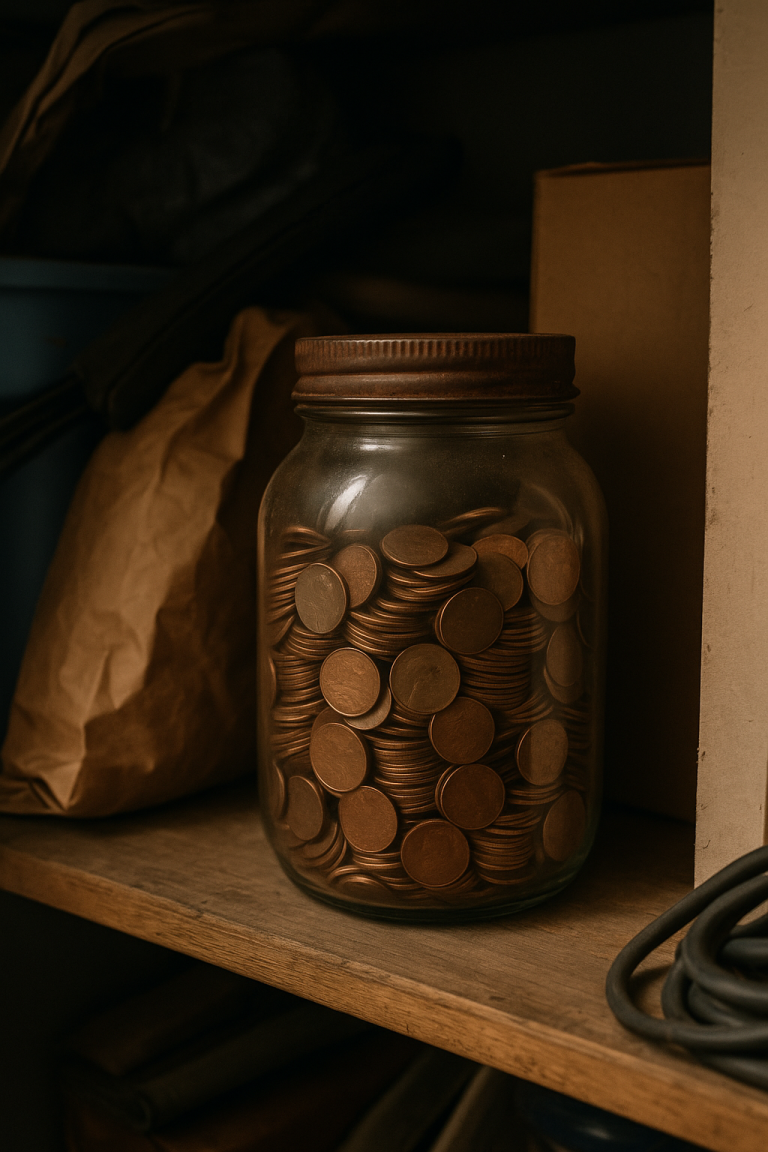How to Start Coin Collecting Without Getting Overwhelmed
Most people start collecting coins the wrong way. They grab a handful of change, Google a few prices, and fall into a maze of jargon, grading scales, and YouTube hype. Then they quit.
It doesn’t have to be like that. You can build a foundation that actually sticks. No microscope. No big spending. Just a clear head, some curiosity, and a pile of coins to learn from.
Start With What You Already Have
Your coin jar is your training ground. That’s where you learn what normal looks like. Dump it out, spread it across the table, and start paying attention.
You’ll see Lincoln cents, Jefferson nickels, Roosevelt dimes, and Washington quarters over and over. That repetition is how your brain learns patterns. Once you’ve handled a few hundred coins, you’ll start spotting the odd ones without trying.
Don’t rush to separate “good” and “bad” coins yet. Just look. Touch. Compare. You’ll begin to notice small details (dates, mint marks, colors, edges) the things that separate average from interesting. That’s how every real collector starts, whether they admit it or not.
Pick One Series and Stick With It
Every beginner wants to collect everything. Pennies, nickels, silver, errors, world coins, all at once. It feels exciting at first, but it’s chaos. You never build depth that way.
Pick one series and live with it for a while. Maybe it’s Lincoln cents. Maybe Buffalo nickels. Whatever grabs you. Learn the design changes, the key dates, the mint marks, and the common problem areas. The goal isn’t to finish a set. It’s to train your eyes to see differences most people miss.
If you want something easy to complete, go for Eisenhower dollars, Susan B. Anthony dollars, or Franklin halves. None of those have any real roadblocks. You can build a full set without needing rare coins or huge money. They’re a good way to learn how albums work and how it feels to actually finish something.
Once you know one series well, the rest of the hobby opens up. You’ll spot value faster, waste less money, and actually understand what you’re looking at instead of guessing.
Learn the Right Terms
You don’t need to sound like a textbook, but you should know the language. Words like mint mark, die, and luster come up constantly. If you don’t know what they mean, you’ll be lost fast.
Start simple. Learn what obverse and reverse mean. Understand the difference between circulated and uncirculated. Know that details on a slab usually means something’s wrong with the surface.
Don’t waste time memorizing every niche term you see online. Half the people using them don’t understand them either. Focus on the words that help you describe what you see in your hand. Once you can talk about coins clearly, you’ll start seeing them clearly too.
Don’t Rush to Buy
Every new collector hits that moment where they see a flashy listing online and think, I need that. Slow down. Buying before you know what you’re looking at is the fastest way to waste money.
Spend time with pocket change, rolls, or a cheap bulk lot first. Learn what cleaned coins look like, how scratches show under light, and how genuine errors differ from damage. That hands-on time builds instinct, and instinct saves money.
When you finally do start buying, start small. Skip the “rare coin” hype and focus on coins that teach you something. Every mistake hurts less when it’s a five-dollar lesson instead of a five-hundred-dollar one.
Keep It Simple
You don’t need a lab setup to collect coins. Start with good lighting, a 10x loupe, and something safe to store your finds in. That’s enough.
Avoid the trap of buying every tool you see online. You don’t need a USB microscope, grading subscription, or fifty types of holders right away. Those things make more sense once you know what problems you’re trying to solve.
The goal early on is rhythm. Look through coins, make notes, and store what matters. Keep it light and repeatable so you actually stick with it. The more you handle coins, the better your instincts get and the less you’ll rely on anyone else to tell you what’s valuable.
Closing Thoughts
Coin collecting rewards patience. Everyone wants shortcuts, but the people who last are the ones who slow down and pay attention. Handle more coins. Ask questions. Learn the patterns.
You don’t need rare dates or expensive gear to feel like a real collector. You just need curiosity and time at the table. The more you look, the more you see. That’s when the hobby starts to feel less like luck and more like skill.

